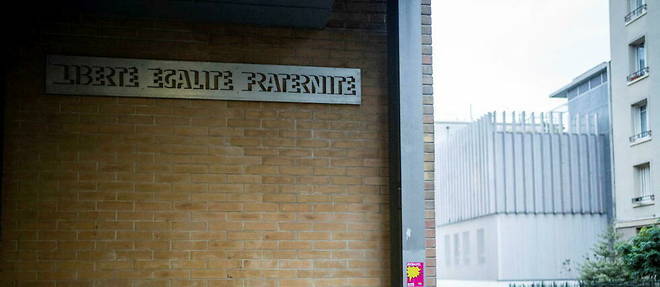The philosopher Pierre-Henri Tavoillot insists on the need to counter what he calls an “offensive”, given the resurgence of these religious clothes at school.
Interview by Alice Pairo-Vasseur

© XOSE BOUZAS / Hans Lucas / Hans Lucas via AFP
Published on
Subscriber-only audio playback
En spite of the law prohibiting religious symbols at school, more and more students are entering schools wearing abayas, long, loose-fitting dresses assimilated to Muslim religious attire. These young girls, playing on the ambiguity of a garment that they present as cultural, sometimes leave headteachers helpless.
Faced with this phenomenon, the Minister of National Education, Pap Ndiaye, spoke on June 6 with the rectors of academies, inviting them to be more “firm” against these attacks on secularism. Pierre-Henri Tavoillot, professor of political philosophy at the Sorbonne and responsible for a diploma “Referent secularism” intended for institutions and companies, returns, for Point, on the mistakes made by the Institution and the urgent need to support heads of institutions “on the front line”.
Point : How to explain that despite the 2004 law on the prohibition of religious symbols in schools, abayas are multiplying in schools?
Pierre-Henri Tavoillot: We did not react fast enough or strong enough. The first abayas appeared in schools more than a year ago and the Ministry of National Education – despite a report issued by the Council of Elders of Secularism – only took up the subject in end of the year. However, it is classic: the delay amplifies the problems. Also, Pap Ndiaye, who formulates a reminder of the law, invites establishments to initiate, before the ban, procedures for dialogue with students. It is clear that they are a failure… The law is clear and the Minister should have stuck to these words: no one in an abaya will be tolerated in a school. I have the impression that the quarrel of the veil is being replayed (first controversy relating to this religious sign, in 1989, in Creil, Editor’s note). It’s sad to see that we don’t learn from our mistakes…
READ ALSOSecularism: “The school should not be afraid to denounce”
While some young girls argue that the abaya is a cultural garment, Pap Ndiaye replied on June 6 that she was “clearly concerned by the circular of November 9, 2022”, aimed at strengthening secularism at school. Does this sound the end of ambiguity for school leaders?
It was indisputable that the abaya fell under the scope of the law. Leaving their establishment, many young girls admit to wearing it for religious reasons. But Pap Ndiaye’s declaration does not mean that the problem has been solved… Indeed, it is up to the headteachers – as the latter specified – to assess the religious character of a garment that would attract their attention. However, the latter are already on the front line and often caught between two fires: the hostility of families on the one hand, and the “pas de vague” on the other. Already, some are tolerating more than they should. We also hear it from the mouths of some young girls: “I can see that people look at me badly, but they don’t dare say anything to me! “We will have to support our heads of establishment if we want to counter this offensive. Because it is.
READ ALSOAttacks on secularism: heads of establishment under tension
Explain to us…
We find, through the abaya at school, all the strategic springs of Brotherhood: entryism (diffusion), orthopraxy (the manifestation of one’s identity) and the denunciation of Islamophobia. Without overestimating the power of this offensive, it is crucial to remain lucid and vigilant. Because the school is the favorite playground of the fundamentalists. It is both a highly symbolic place for our Republic and the ideal place of mission to exercise power over our youth. By proposing an ideology that gives meaning to a world that may lack it, fundamentalists offer the most vulnerable more powerful benchmarks than their taste for freedom while flattering the identity logic of our time. And it’s a vicious circle: these young girls, by giving a bad conscience to those who don’t wear the abaya, are themselves working on this proselytism…
